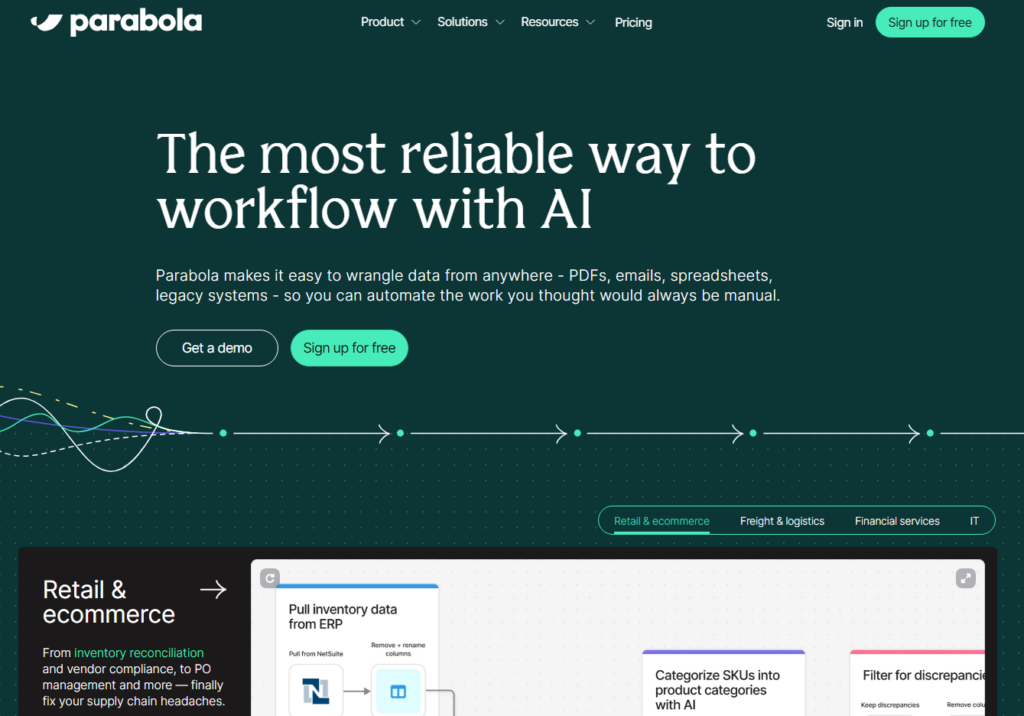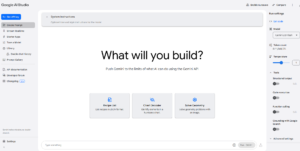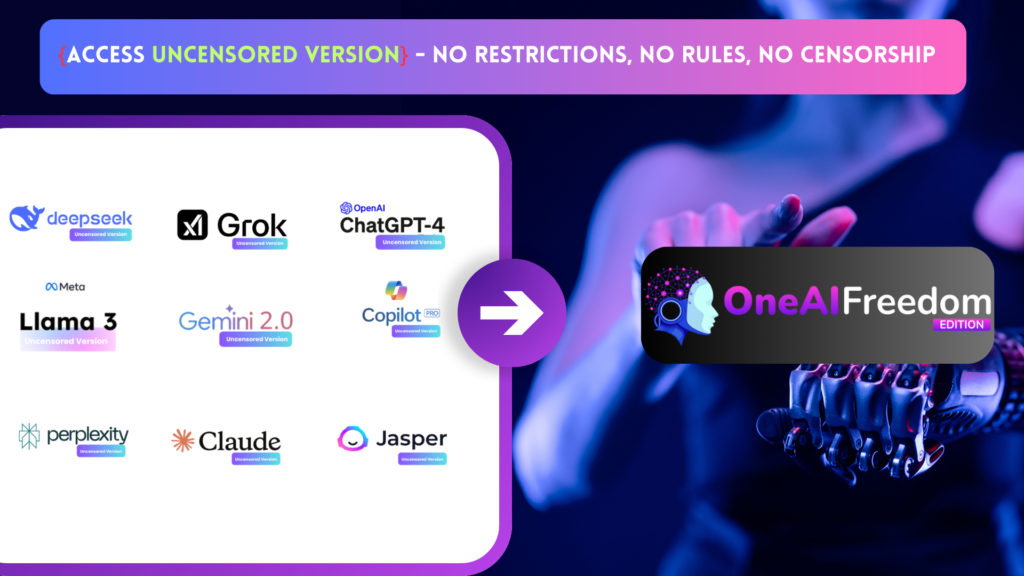Discover Parabola, the no-code automation tool! Explore its features, pros, cons, pricing, and user reviews for seamless workflow and data automation.
Parabola: No-Code Automation Tool - Features, Pros, Cons & Pricing
In today’s fast-paced digital landscape, businesses and individuals are constantly seeking ways to streamline workflows, automate repetitive tasks, and improve efficiency. Enter Parabola, a no-code automation platform designed to simplify complex data processes and empower users to build custom workflows without any coding knowledge. Whether you’re a business analyst, marketer, or operations manager, Parabola promises to transform the way you handle data and automate tasks.
In this blog, we’ll explore what Parabola is, its key features, pros and cons, who can benefit from it, pricing details, what makes it unique, and how we rated it. We’ll also include user reviews to give you a comprehensive understanding of this innovative tool.
What is Parabola?
Parabola is a no-code automation platform that allows users to build custom workflows, automate data processes, and integrate various apps and services. Designed for non-technical users, Parabola provides a drag-and-drop interface that simplifies complex tasks like data transformation, reporting, and workflow automation.
The platform connects with popular tools like Google Sheets, Slack, Shopify, and Salesforce, enabling users to create seamless workflows across multiple applications. Whether you’re automating data entry, generating reports, or managing customer data, Parabola makes it easy to streamline your operations.
Key Features of Parabola
Parabola is packed with features that make it a standout tool for no-code automation. Here are some of its key functionalities:
1. Drag-and-Drop Interface
Parabola’s intuitive drag-and-drop interface allows users to build custom workflows without any coding knowledge. Simply select the steps you need, and Parabola will handle the rest.
2. Data Transformation
The platform enables users to clean, transform, and analyze data using pre-built functions like filtering, sorting, and merging. This is ideal for preparing data for reports or integrations.
3. App Integrations
Parabola integrates with over 100 apps and services, including Google Sheets, Slack, Shopify, and Salesforce, allowing users to create seamless workflows across multiple platforms.
4. Automated Workflows
Users can automate repetitive tasks like data entry, report generation, and customer notifications, saving time and reducing errors.
5. Custom Reporting
Parabola allows users to create custom reports and dashboards, providing actionable insights into their data.
6. Collaboration Tools
The platform supports team collaboration, enabling multiple users to work on the same workflow, leave comments, and track changes in real time.
7. Scheduling
Users can schedule workflows to run at specific intervals, ensuring that tasks are executed at the right time.
8. Error Handling
Parabola includes error-handling features that alert users to issues in their workflows, ensuring smooth and reliable automation.
Pros and Cons of Parabola
Like any tool, Parabola has its strengths and weaknesses. Here’s a breakdown of its pros and cons:
Pros
Ease of Use: Parabola’s drag-and-drop interface makes it accessible to non-technical users.
Time-Saving: Automates repetitive tasks, freeing up time for more important activities.
Versatile Integrations: Supports over 100 apps and services, making it ideal for complex workflows.
Customizable: Offers a high degree of customization for workflows and reports.
Affordable: Cost-effective compared to hiring developers or purchasing expensive software.
Collaboration-Friendly: Supports team collaboration, making it ideal for businesses.
Cons
Learning Curve: While user-friendly, Parabola may require some time to master its advanced features.
Limited Advanced Features: May lack some of the advanced capabilities of coding-based automation tools.
Internet Dependency: Being a cloud-based platform, Parabola requires a stable internet connection for optimal performance.
Who Can Use Parabola?
Parabola is a versatile tool that can benefit a wide range of users:
1. Business Analysts
Business analysts can use Parabola to automate data processes, generate reports, and gain actionable insights.
2. Marketers
Marketers can automate tasks like lead management, campaign tracking, and customer notifications, allowing them to focus on strategy.
3. Operations Managers
Operations managers can streamline workflows, automate data entry, and improve efficiency across their teams.
4. E-commerce Businesses
E-commerce businesses can use Parabola to manage inventory, process orders, and integrate with platforms like Shopify and WooCommerce.
5. Freelancers
Freelancers can automate repetitive tasks like invoicing, time tracking, and client communication, allowing them to focus on their work.
Pricing
Parabola offers several pricing plans to suit different needs and budgets:
Free Plan: Includes basic features like data transformation and limited workflow automation.
Starter Plan: Priced at $49/month, this plan includes advanced features like custom reporting and app integrations.
Pro Plan: Priced at $149/month, this plan includes team collaboration tools, priority support, and additional customization options.
Enterprise Plan: Custom pricing for businesses with advanced needs, including API access and dedicated support.
Parabola also offers a 14-day free trial for all paid plans, allowing users to test the platform before committing.
What Makes Parabola Unique?
Parabola stands out from other no-code automation tools for several reasons:
1. Drag-and-Drop Interface
Parabola’s intuitive interface makes it easy for non-technical users to build custom workflows without any coding knowledge.
2. Versatile Integrations
With over 100 app integrations, Parabola can connect virtually any tool you use in your daily workflow.
3. Custom Reporting
The platform allows users to create custom reports and dashboards, providing actionable insights into their data.
4. Collaboration Tools
Parabola’s team collaboration features make it ideal for businesses looking to streamline workflows across multiple users.
5. Affordability
With plans starting at just $49/month, Parabola offers excellent value for the features it provides.
How We Rated Parabola
We evaluated Parabola based on several criteria, including ease of use, features, effectiveness, pricing, and customer support. Here’s our rating:
Ease of Use: 9/10
Features: 9/10
Effectiveness: 9/10
Pricing: 8/10
Customer Support: 8.5/10
Overall Rating: 8.7/10
User Reviews
Here’s what some users have to say about Parabola:
Sarah L., Business Analyst: “Parabola has completely transformed my data processes. The drag-and-drop interface makes it so easy to automate tasks and generate reports.”
Mike T., Marketer: “I use Parabola to automate my lead management and campaign tracking. It’s incredibly versatile and has saved me so much time.”
Emily R., Operations Manager: “Parabola’s collaboration tools have made it easy for my team to streamline workflows and improve efficiency. Highly recommend it!”
Final Thoughts
Parabola is a game-changing tool for anyone looking to automate workflows and streamline data processes. Its drag-and-drop interface, versatile integrations, and customizable features make it a standout choice for business analysts, marketers, and operations managers.
While it may require some time to master its advanced features, the time-saving benefits and increased productivity make it a worthwhile investment. If you’re ready to take your efficiency to the next level, Parabola is definitely worth a try.






One Response